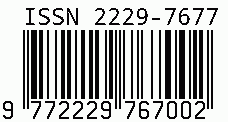
International Journal on Science and Technology
E-ISSN: 2229-7677
•
Impact Factor: 9.88
A Widely Indexed Open Access Peer Reviewed Multidisciplinary Bi-monthly Scholarly International Journal
Plagiarism is checked by the leading plagiarism checker
Call for Paper
Volume 16 Issue 4
October-December 2025
Indexing Partners



















PV To Grid Connected Multilevel Inverter With Hybrid Modulation Technique
| Author(s) | Sumit Balmik, Sachindra Verma |
|---|---|
| Country | India |
| Abstract | In this article, a grid-connected photovoltaic system based on multilayer inverters (MLI) is modeled. The cascaded T-type inverter is responsible for developing the MLI topology. Connecting the PV sources in series raises the input voltage, making it challenging to connect other MLI circuits to the grid. Three-level buck-mode operation is produced by this cascaded T-type multilevel inverter (CT2MLI), which has the following benefits: a low peak inverse voltage (PIV), a low total harmonic distortion (THD), a low switching loss, and a minimal number of switches. The perturb and observe (P&O) MPPT technique is used to get the maximum power from a PV array. To simplify the gate pulse generation process, CT2MLI employs a hybrid level-shifted and phase-shifted pulse width modulation (PWM) approach. Low dv/dt stress across the switches, low peak inverse voltage (PIV), and low total harmonic distortion (THD). The maximum power point tracking (MPPT) technique perturbs and watches the PV array to obtain the greatest power. To simplify the gate pulse generation process, CT2MLI employs a hybrid level-shifted and phase-shifted pulse width modulation (PWM) approach. The efficiency of the control strategy for the grid-connected PV system based on CT2MLI is shown by the MATLAB simulation results. |
| Keywords | CT2MLI, FFT Analysis, Photo Voltaic (PV) System, Pulse Width Modulation (PWM), T-Type Inverter. |
| Field | Engineering |
| Published In | Volume 16, Issue 3, July-September 2025 |
| Published On | 2025-08-03 |
| DOI | https://doi.org/10.71097/IJSAT.v16.i3.7329 |
| Short DOI | https://doi.org/g9vzfr |
Share this


CrossRef DOI is assigned to each research paper published in our journal.
IJSAT DOI prefix is
10.71097/IJSAT
Downloads
All research papers published on this website are licensed under Creative Commons Attribution-ShareAlike 4.0 International License, and all rights belong to their respective authors/researchers.

